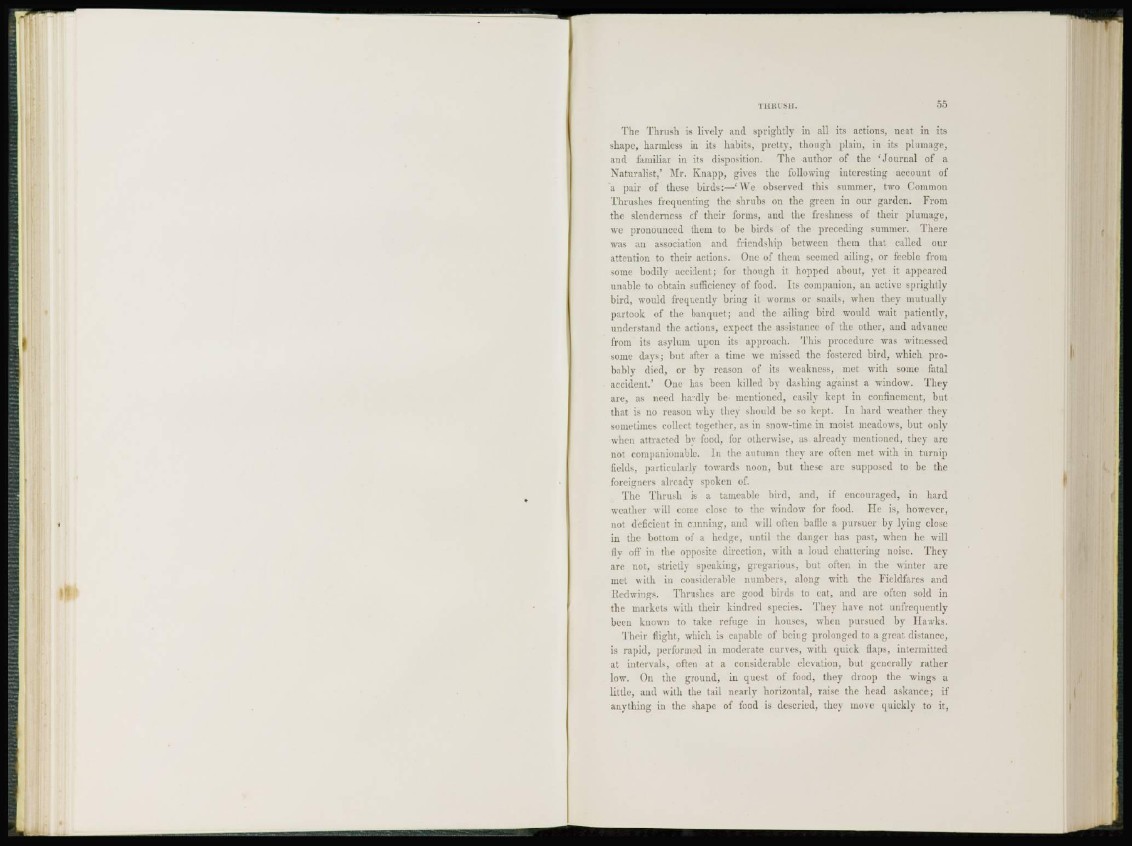
The Thrush is lively and sprightly in all its actions, neat in its
shape, harmless in its habits, pretty, though plain, in its plumage,
and familiar in its disposition. The author of the 'Journal of a
Naturalist,' Mr. Knapp, gives the following interesting account of
a pair of these birds:—'We observed this summer, two Common
Thrushes frequenting the shrubs on the green in our garden. From
the slenderness of their forms, and the freshness of their plumage,
we pronounced them to be birds of the preceding summer. There
was an association and friendship between them that called our
attention to their actions. One of them seemed ailing, or feeble from
some bodily accident; for though it hopped about, yet it appeared
unable to obtain sufficiency of food. Its companion, an active sprightly
bird, would frequently bring it worms or snails, when they mutually
partook of the banquet; and the ailing bird would wait patiently,
understand the actions, expect the assistance of the other, and advance
from its asylum upon its approach. This procedure was witnessed
some days; but after a time we missed the fostered bird, which probably
died, or by reason of its weakness, met with some fatal
accident.' One has been killed by dashing against a window. They
are, as need hardly be- mentioned, easily kept in confinement, but
that is no reason why they should be so kept. In hard weather they
sometimes collect together, as in snow-time in moist meadows, but only
when attracted bv food, for otherwise, as already mentioned, they are
not companionable. In the autumn they arc often met with in turnip
fields, particularly towards noon, but these arc supposed to be the
foreigners already spoken of.
The Thrush is a tameable bird, and, if encouraged, in hard
weather will come close to the window for food. He is, however,
not deficient in cunning, and will often baffle a pursuer by lying close
in the bottom of a hedge, until the danger has past, when he will
fly off in the opposite direction, with a loud chattering noise. They
are not, strictly speaking, gregarious, but often in the winter arc
met with in considerable numbers, along with the Fieldfares and
Redwings. Thrushes are good birds to eat, and arc often sold in
the markets with their kindred species. They have not unfrequently
been known to take refuge in houses, when pursued by Hawks.
Their flight, which is capable of being prolonged to a great distance,
is rapid, performed in moderate curves, with quick flaps, intermitted
at intervals, often at a considerable elevation, but generally rather
low. On the ground, in quest of food, they droop the wings a
little, and with the tail nearly horizontal, raise the head askance; if
anything in the shape of food is descried, they move quickly to it,